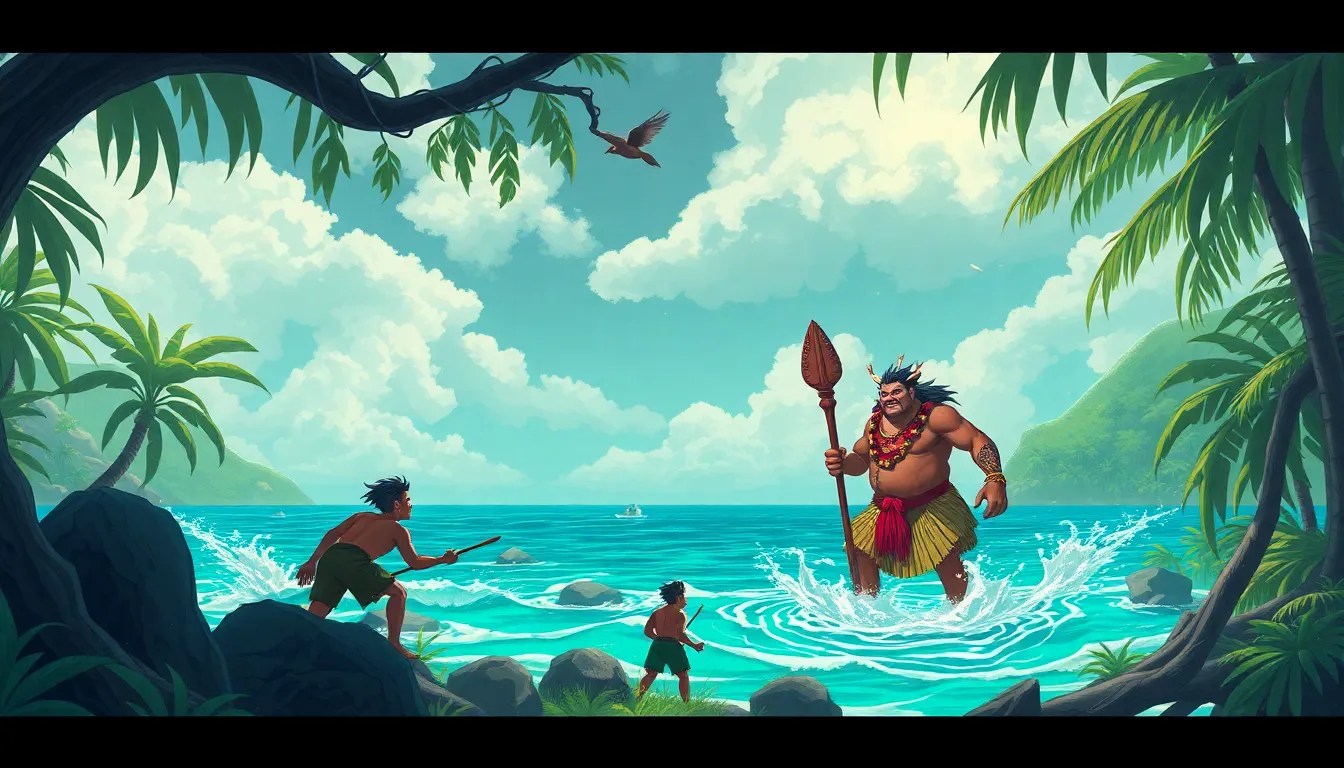The Trickster’s Path: Maui’s Adventures and Lessons in Polynesian Myth
I. Introduction to Maui: The Cultural Significance of the Trickster
Maui is one of the most celebrated figures in Polynesian mythology, revered not only for his cleverness but also for his adventurous spirit. His tales resonate with themes of creation, mischief, and transformation, making him a central character in the folklore of numerous Pacific cultures.
The trickster archetype, represented by Maui, plays a vital role in storytelling across various cultures. Tricksters are often characterized by their cunning, intelligence, and ability to navigate complex social and natural worlds. They challenge norms, push boundaries, and often serve as catalysts for change.
Maui’s stories are integral to the cultural identity of Polynesian societies, offering insights into human nature, the environment, and the relationships between gods and mortals. Through his adventures, Maui teaches valuable lessons that continue to resonate with modern audiences.
II. The Birth and Origins of Maui
The origins of Maui are shrouded in myth, with various tales describing his birth. In some accounts, he is born to a human mother and a divine father, highlighting his unique position between the mortal and divine realms. His lineage often includes storied ancestors, which reinforces his significance in the pantheon of Polynesian deities.
From a young age, Maui displays signs of his trickster nature. He is known for his curiosity and rebellious spirit, often bending the rules and challenging the status quo. His early antics set the stage for his later legendary exploits and solidify his role as a cultural hero.
III. Major Adventures of Maui: A Journey through Myth
Maui’s adventures are numerous and varied, each encapsulating important cultural themes and moral lessons. Some of his most notable exploits include:
- The Capture of the Sun: In this tale, Maui uses his cunning to slow down the sun, ensuring that there is more daylight for his people to work and play. He creates a noose from his sister’s hair and captures the sun, forcing it to move more slowly across the sky.
- Fishing up the Hawaiian Islands: With the help of his magical fishhook, Maui is said to have fished the Hawaiian Islands from the ocean floor. This act symbolizes the connection between the people and the land, showcasing Maui’s role as a creator.
- The Search for Immortality: In his quest for eternal life, Maui learns valuable lessons from the gods. However, his attempts often lead to unintended consequences, illustrating the complexities of ambition and the pursuit of knowledge.
IV. Maui’s Encounters with Other Deities and Creatures
Maui’s adventures frequently involve interactions with other significant Polynesian gods and mythical creatures. These encounters shape his character and influence his development as a trickster.
Some notable interactions include:
- Interactions with Major Polynesian Gods: Maui often finds himself in conflict or collaboration with gods such as Tangaroa (god of the sea) and Hina (goddess of the moon). These relationships highlight the interconnectedness of the divine and human worlds.
- Conflicts and Alliances with Mythical Beasts: Maui’s encounters with creatures like the giant fish or the monstrous bird provide thrilling narratives that often conclude with moral lessons.
V. The Lessons Learned from Maui’s Mischiefs
The adventures of Maui are rich with themes that impart essential lessons to listeners. Some of these include:
- Humility and Respect for Nature: Many of Maui’s actions, while clever, often come with consequences that teach the importance of respecting the natural world.
- The Duality of Trickster Behavior: Maui embodies both creation and destruction, reminding us that every action has its repercussions.
- Moral Lessons: Through his mischiefs, Maui provides insights into human behavior, encouraging reflection on our choices and their impacts.
VI. The Legacy of Maui in Modern Polynesian Culture
Maui’s influence extends beyond ancient myths into contemporary culture. His legacy can be seen in:
- Contemporary Storytelling and Art: Modern interpretations of Maui’s stories continue to inspire artists, writers, and performers, keeping the spirit of these tales alive.
- Tourism and Cultural Representation: Maui has become a symbol of Polynesian culture, drawing tourists to the islands and promoting cultural appreciation.
- Preservation of Myths: In the face of globalization, efforts are being made to preserve and share Maui’s stories, ensuring that they remain a vital part of Polynesian heritage.
VII. Comparisons with Other Trickster Figures in World Mythology
Maui’s role as a trickster can be compared to other figures in global mythology, such as Anansi from African folklore and Loki from Norse mythology. Each of these characters embodies unique traits and cultural significance.
Key comparisons include:
- Similarities and Differences: While all tricksters challenge norms and utilize their cunning, Maui’s adventures often focus on creation, whereas figures like Loki may embody chaos and destruction.
- The Universal Appeal of the Trickster Archetype: Tricksters are found in many cultures, showcasing the shared human experience of navigating life’s complexities.
- Insights Gained: Comparing Maui with other tricksters can deepen our understanding of cultural values and human nature.
VIII. Conclusion: Embracing the Lessons of Maui’s Trickster Path
The adventures of Maui continue to resonate with audiences today, offering timeless lessons on humility, respect, and the interplay of creation and destruction. As we explore these narratives, we gain a deeper appreciation for Polynesian mythology and its reflections on human behavior.
Encouraging exploration of Maui’s tales fosters a greater understanding of the cultural significance of these stories, which are rich in wisdom and insight.
In closing, the importance of storytelling in shaping our understanding of values and behavior cannot be overstated. Maui’s adventures remind us of the enduring relevance of myths in our lives.



